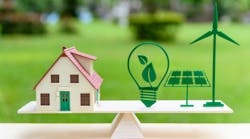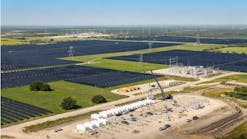Energy Efficiency Can be a Win-Win for Customers and Utilities
The electric utility business model universally employed today is at risk of going the way of buggy whips due to growing pressure on utilities to facilitate distributed energy resources (DERs). Where authorized by regulators, utilities can provide DER service to avoid loss of scope. However, some ratepayers still may suffer. Customers who install solar panels, as one example, may be forcing other customers to pick up the T&D charges they were paying. Regulators appear fine with utilities “outsourcing” power supply investments until a major outage event is exacerbated by such reduced utility investment and resource control. NERC is warning that several regions of the U.S. are at risk of energy shortfalls this summer due to our transition to intermittent resources. Helping customers save money through energy efficiency (EE) programs may be a better means to achieve customer savings and sustainability while maintaining the safety net that a comprehensive, healthy electric service provider innately delivers.
Long viewed as an unloved stepchild by electric utilities, particularly during better economic times, EE programing may be a superior alternative to DERs for helping all customers save money. First, however, let us consider the environmental implications of EE versus DERs. One might argue that DERs such as solar and wind are renewable resources. They still have a concerning environmental footprint related to manufacturing, delivery, and residuals disposal, with a significant percentage of the equipment coming from countries with much higher emissions than the U.S. This also increases our energy dependency on foreign sources. Conversely, EE opportunities may, like some DERs, involve zero emissions at the point of use, plus they often save fuel and reduce power losses all the way through the electricity cycle. Moreover, the technology and equipment utilized are arguably manufactured domestically more often than DERs. Possibly as compelling, EE programing and products provide a platform for market engagement with customers and more opportunities to increase customer satisfaction and, frankly, keep their business.
EE opportunities are available for all types of customers and power usage levels, from the family renting an apartment to the entity owning a large manufacturing facility. Likewise, there is a broad range of savings measures available and payback is often much shorter than that achievable from investing in a DER. While the invisible hand effects behind a voluntary utility EE program approach appear more compelling than ever, at least 27 states have taken the regulatory path by adopting energy efficiency resource standards (EERS). In such states, utilities or public sector facilitators work with electric customers to implement energy efficiency programs. A side benefit for customers who participate is these programs offer financial incentives which can help reduce the cost of efficiency measures.
Despite the overlay of a mandated, ratepayer-funded EE program, utilities can stand out by taking measures to ensure as many customers as possible achieve the greatest possible value from whatever incentives are offered. Further, in states with EERS or active state energy programs, non-ratepayer funded rebates, loans, grants, tax credits and sales tax exemptions may be available. Utilities can ensure their customers are aware of these benefits. In addition, some states have energy efficiency self-direct programs which allow large customers to retain for internal use the conservation portion of their utility’s public purpose charge. Facilitating such opportunities and helping customers obtain state and federal funding to implement efficiency efforts helps utilities create loyal customers and potentially avoid the loss of large customers with options.
The American Council for an Energy Efficient Economy (ACEEE) issues an annual score card which ranks states according to a menu of EE criteria (Scorecard: States Adopt New Energy-Saving Rules but COVID-19 Slows Overall Progress | ACEEE ). This publication provides a lot of useful information, including state trends regarding EERS, vehicle standards, building codes, appliance and equipment standards, and state government initiatives. It provides a good means of comparing what other utilities are addressing. ACEEE has a strong penchant for regulations and requirements that lead to cutting carbon emissions and greenhouse gases domestically. Their annual scorecard does not rate states according to utility electric rates or customer satisfaction with their state’s energy policies.
Utilities can choose to do more than just live with state and federal EE requirements. They can advocate for programs and policies that help their customers in the short and long term. Of course, utilities should make sure they are optimizing EE in their own infrastructure, but they also can promote practices that ensure we are not simply achieving energy savings locally or outsourcing our businesses. Electric utilities have the expertise in their collective wheelhouse to save customers electricity dollars, reduce energy related environmental impacts and provide growth inducing services.


